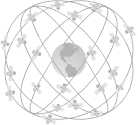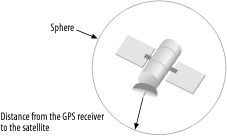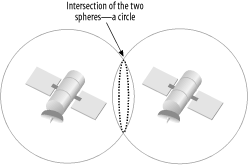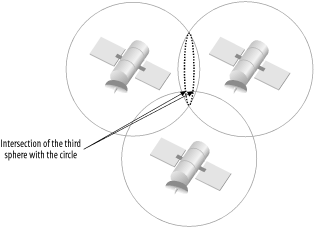Chapter 10. GPS
| < Day Day Up > |
| The Global Positioning System (GPS) consists of 27 earth-orbiting satellites (of which 24 are operational and 3 are backups ) circling the earth twice each day. These satellites are arranged in six orbital paths, as shown in Figure 10-1. Figure 10-1. Satellites circling the earth in six orbital paths These satellites continuously emit coded positional and timing information using low-power radio waves at frequencies around 1,500 MHz. GPS receivers on earth can pick up the signals and calculate the exact (we discuss what we mean by "exact" later in this chapter) positioning on earth. The orbits of the satellites are arranged in such a manner that at least four satellites are visible at any given time. Thus, a GPS receiver is able to receive signals from these four satellites and, based on the various signals transmitted by them, derive positional information on earth. So how does the GPS receiver calculate its position? It does so by measuring the distance between itself and the satellites. Signals emitted by the satellites are received by the GPS receiver after a time lag, and based on the speed of light, the GPS receiver calculates the distance from itself to the satellite. But obtaining the distance from one satellite is not enough, because it tells you only that you are somewhere on the surface of the sphere (think in terms of three-dimensional space). Figure 10-2 shows that you can be anywhere on a sphere with a radius equal to the estimated distance to the satellite. Figure 10-2. A sphere containing all the possible positions To pinpoint your exact location, GPS uses at least three satellites to triangulate an exact location on earth. Figure 10-3 shows that if you have two satellites, then you can narrow down your location to the intersection of the two spheres. In this case, you can be anywhere on the dotted line (which is an ellipse). Figure 10-3. Intersection of two spheres forming an ellipse This is not precise enough. With a third satellite, you can reduce the possibilities to two (see Figure 10-4). But one of these two points is in space, which is not likely the position you are in. Hence, you can effectively derive your position from three satellites, but four or more satellites are needed to get a decent altitude fix. Figure 10-4. Intersection of the ellipse ( formed by the two intersecting spheres) with a third sphere
|
| < Day Day Up > |
EAN: 2147483647
Pages: 100
